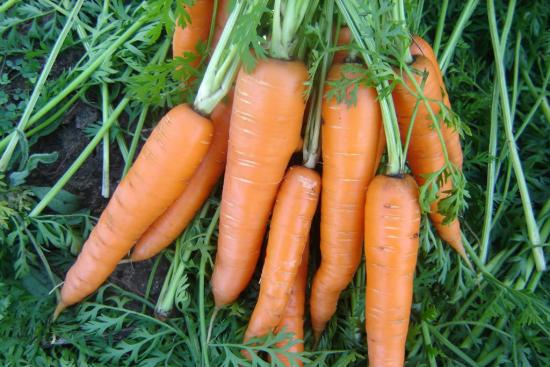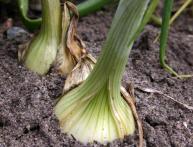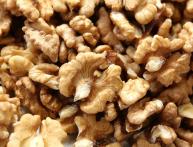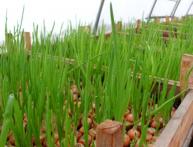How to grow carrots: planting and care, the best varieties

Many gardeners are familiar with the situation when carrot seeds, sown in compliance with all the basic rules of agricultural technology, do not germinate. Sometimes it is impossible to understand why this happens. What secrets do carrots keep, planting and caring for them, what you need to know in advance.
Content:
- When to sow carrots, choosing a variety and preparing seeds
- Where and how to plant carrots
- How to care for carrots
When to sow carrots, choosing a variety and preparing seeds
Genus Carrot belongs to the Umbrella family. Cultivated carrots are grown for human consumption. It is divided into two types:
- dining room
- aft
Naturally, table varieties of carrots are grown for food consumption. Spring planting dates occur immediately after the soil thaws. In some places these are the last days of March, but most often it is the second half of April - early May. Carrot varieties for spring sowing:
- Autumn King - a variety with excellent presentation and good taste, fruits weighing up to 200 g and length up to 29 cm;
- Alenka - tasty fruits, weighing 150 - 170 g, one of the best varieties for sowing in spring
- Tushon - the fruits are quite large, weighing up to 180 - 190 g
In summer, it is customary to plant carrots in the first ten days of June; the variety suitable for this is: Flakke or Valeria - a productive, long-lasting variety, the length of the fruit reaches 0.3 m
In autumn, carrots should be sown just before the soil freezes. Most often this happens in the last ten days of October - the first ten days of November, depending on weather conditions it can be later.

Varieties carrots for autumn sowing. Early and mid-ripening, frost-resistant varieties are most suitable for sowing before winter. This method is used for harvesting as early as mid-June and for eating carrots in summer and early autumn. These carrots are not suitable for storage in winter. It is best to opt for the following varieties for autumn planting:
- Nantes 4 - growing season 80 - 100 days, 65 days pass from emergence to harvest, root crops are cylindrical, red-orange, sweet.
- Losinoostrovskaya 13 is a cold-resistant variety, root vegetables contain an increased amount of carotene, the pulp is tender.
- Moscow Winter is an ideal variety for many regions with cold winters.
If the gardener has decided on the varieties of carrots and the planting dates that are convenient for him, then all that remains is to figure out how best to prepare seeds to sowing.
Preparing seeds for sowing
For sowing in spring and summer, planting material must be checked for the presence of empty, defective seeds. To do this, they are filled with cold water. Anything that floats up is removed. At the next stage, you need to wash off essential oils and other substances that delay germination from the surface of the seeds.
To do this, the seeds need to be placed in a bag of two to three layers of gauze or thin fabric. Dip it in water heated to + 45 degrees and rinse well. Drain the water and repeat the procedure. After this, the seeds are placed in cold water and slightly dried. The above techniques help to achieve maximum germination of carrot seeds.
The time for emergence of seedlings is also reduced. This usually happens in the second week after sowing. Before winter, sowing is done only with dry seeds. The choice of location for the carrot plant is also important. bed.
Where and how to plant carrots
When choosing a location, you need to pay attention to the best predecessor for carrots. These are primarily the following crops:
- cucumbers
- potato
- tomatoes
- cabbage
- zucchini
Bad predecessors for carrots will be:
- dill
- parsley
- parsnip
- celery
The bed is selected in a well-lit place with maximum lighting time during the day. The soil should be quite loose; on heavy soils, the shape of the root crop may change, and the varietal qualities will not be fully manifested. It is best to dig up the bed in the fall, regardless of the sowing date. If sowing is planned in spring or summer, then it needs to be mulched to retain moisture.
The earth must be dug to a depth of at least 25 - 30 cm. For autumn planting, the depth of the furrows is made up to 2 - 3 cm in depth. The distance between the grooves is 20 cm. Seed consumption is one third more than for spring sowing. The furrows need to be covered with loose, warm soil. To do this, on the eve of sowing, part of the soil must be brought into the heat. A 3-4 cm layer of peat is poured over the filled furrows.
In winter, snow is shoveled onto the garden bed. You can throw spruce branches on top of the snow. Important! When sowing in the fall, you can add some radish or lettuce seeds to the carrot seeds. The shoots of these crops will appear earlier and will mark rows with carrots. This will make caring for carrots easier.
In the spring, mulch is removed from the beds prepared in the fall. The soil underneath is quite loose and moist. Using a board about 10 cm wide, make even indentations, pressing the board 1 - 2 cm. After which the soil in the indentation is well watered.
Prepared seeds are sown evenly along the edge of the depression.Having moved the board, another such depression is made nearby using the board, and the seeds are sown along the edge farthest, in relation to the first row. Close up the seeds soil. It is important that the embedment depth is not more than 1 cm.
With such planting, all the seeds will be at approximately the same depth and will sprout amicably. The garden bed with carrots should not be watered until the shoots appear. Carrots are a fairly hardy crop, but they still require some care.
How to care for carrots
Thinning and fertilizing

Regardless of the sowing time, an important step in growing carrots is thinning the crops. Usually this is done in two steps. The first thinning is carried out after the second true leaf appears. There should be 1.5 - 2 cm between neighboring plants.
The second thinning is carried out two to three weeks after the first. As a result, the distance between neighboring plants should be 4 cm for varieties with medium-sized root crops and 6 cm for large-fruited varieties. After the second thinning, the carrots can be fed with nitrogen fertilizers. The ear is scattered along the row and embedded in the soil. The amount of fertilizer is 20 g per square meter. m.
Carrots are very responsive to watering. In dry summers it is needed water every other day, not allowing the soil to dry out too much. But at the end of June, watering is either stopped completely or made less frequent. This stimulates the growth of the root crop in depth, where more moisture is retained than in the upper layers of the soil.
To prevent the top part of the carrot from sticking out of the ground and turning green, the plantings need to be well hilled. At the same time, you need to loosen the soil and remove weeds. There are no complicated techniques in caring for carrot crops that any gardener cannot handle.
Video about proper planting of carrots:











Comments
I usually plant carrots after potatoes or cabbage. When planting, I immediately make a large distance, about five centimeters, and do not thin out after germination. I do watering and hilling regularly. The harvest is excellent.